The week at a glance
- Black-billed Cuckoo on North Uist, Outer Hebrides
- Lammergeier moves from Devon to Cornwall, where the Dalmatian Pelican is still present
- Classic spring southern overshoots present in numbers
We have moved deeper into the phase of spring where the truly incredible can almost be expected, as reaffirmed by the news of a mind-blowing American vagrant of legendary status. Initially seen around a garden at the north end of the Paible circular road on North Uist, Outer Hebrides, on the evening of Sunday 22nd, the Black-billed Cuckoo went on to become one of the best survivors of its species in Britain, as well as the first spring occurrence of this declining Nearctic cuculid. Aside from the one-day bird on North Ronaldsay, Orkney, in 2014, the North Uist individual is the first in Britain since an ill-fated October arrival on the Isles of Scilly in 1990 and duly provided an instant spike in the number of flights bound for the island. The bird seems to have been feeding reasonably well on the local supply of caterpillars and there was no mention of its appearing indisposed by 24th, so perhaps it will go on to further belie its species' reputation as a perch-dropper.
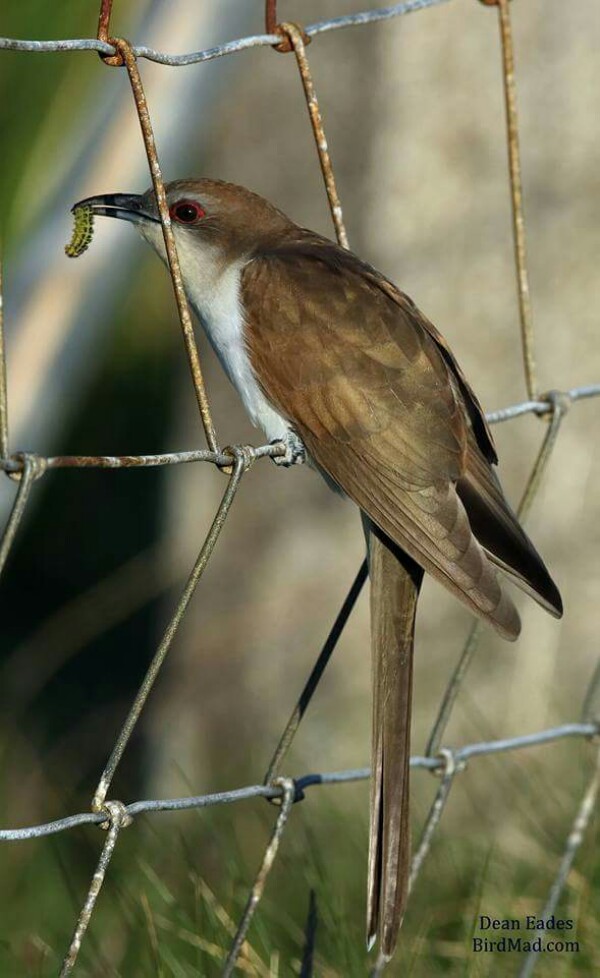
Black-billed Cuckoo, Bayhead, North Uist, Outer Hebrides (Photo: Dean Eades)

Black-billed Cuckoo, Bayhead, North Uist, Outer Hebrides (Photo: anon)
The roving immature Lammergeier continued to lead birders a merry dance this week. Starting over the Cookworthy Plantation, north-east of Dartmoor, on 20th, it then vanished until late afternoon sightings in the Bellever Forest/Postbridge area, also Devon, two days later. It was still on Dartmoor on 23rd, spending a couple of hours in the Princetown area but had moved approximately 50 km WSW by 14:30, when it was clocked over Breney Common, Cornwall, after a possible sighting near Roche 35 minutes previously. The next time it made itself known was as it headed north near Rosenannon on the evening of 23rd; although its choice of roost site is unknown, it must have spent the night in the vicinity as it was seen nearby, south of Winnards Perch, the next morning. Perhaps it will become more predictable in its movements yet, but for the time being great patience, foresight and much luck seem to be required to connect with this beast. The vulture's move west into Cornwall means that the county is now hosting a frankly bizarre duo of mighty vagabonds: the contentious adult Dalmatian Pelican continues to lumber around west Cornwall to the end of the review period, seemingly chancing upon the Hayle Estuary on 18th only to be flushed off by a dog but returning there on 20th. After passing over Helford a couple of times, it tried out the river there on the morning of 24th but was back at Drift Reservoir, its old favourite haunt, in the evening.
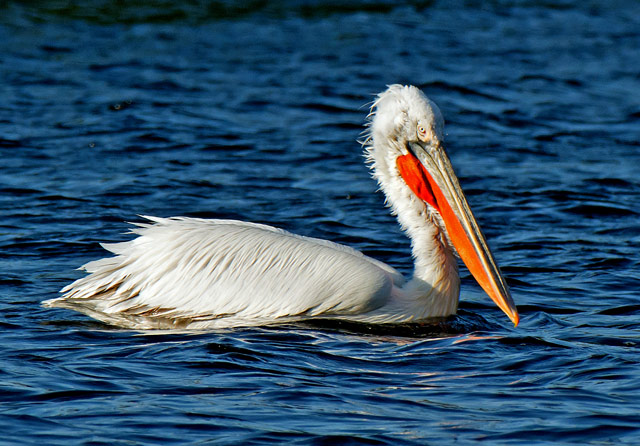
Dalmatian Pelican, Drift Reservoir, Cornwall (Photo: Alex McKechnie)
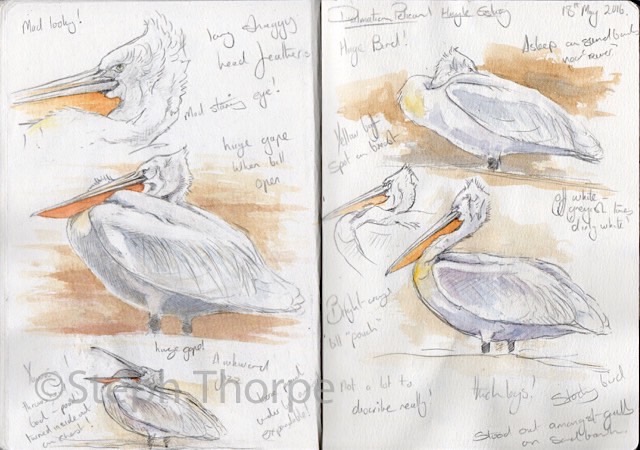
Dalmatian Pelican, Hayle Estuary, Cornwall (Illustration: Steph' Thorpe)
An intriguing Ficedula flycatcher on Fair Isle, Shetland, on 23rd soon resolved to be the first Collared Flycatcher in Britain this year, and it shared the podium with the both the cuckoo and a Stilt Sandpiper at Pennington Marshes, Hants, on 22–23rd, as the finest of the week's new rarities. It seems likely that the sandpiper might be the same wandering individual involved in reports from three sites in the Netherlands since 11th May, last seen in Friesland on 19th.

Stilt Sandpiper, Pennington Marshes, Hampshire (Photo: Jason Ward)
A Pacific Golden Plover at Slains, Aberdeenshire, on 21–22nd would have otherwise headlined this week's wader line-up, although it departed very early in the morning of its second day. On Shetland, Foula's Lesser Yellowlegs remained to 18th and St Mary's, Scilly, supported the Spotted Sandpiper at Porth Hellick to 23rd. The two Black-winged Stilts were still being reported at Wat Tyler CP/Bowers Marsh, Essex, to 24th, and a single pitched up at Minsmere, Suffolk, for a few hours on 20th. Back-up came in the form of female Red-necked Phalaropes at Grindon Lough, Northumberland, on 19th and Papa Westray, Orkney, on 23rd as well as three Pectoral Sandpipers: at Longtown, Cumbria, on 18–20th; Loch of Hillwell, Shetland, on 22nd; and Boldon Flats NR, Co Durham, on 24th. Two Temminck's Stints fed unobtrusively at Hatfield Moors, South Yorkshire, on 18th but only one could be found there the next day; the lingering bird at Belvide Reservoir, Staffs, remained to 20th and the county also sported a new individual at Tucklesholme Quarry on 18–22nd, while another was at Frampton Marsh, Lincs, on 21st.

Pacific Golden Plover, Slains Pools, Aberdeenshire (Photo: Ian Broadbent)

Spotted Sandpiper, St Mary's, Isles of Scilly (Photo: Joe Pender)
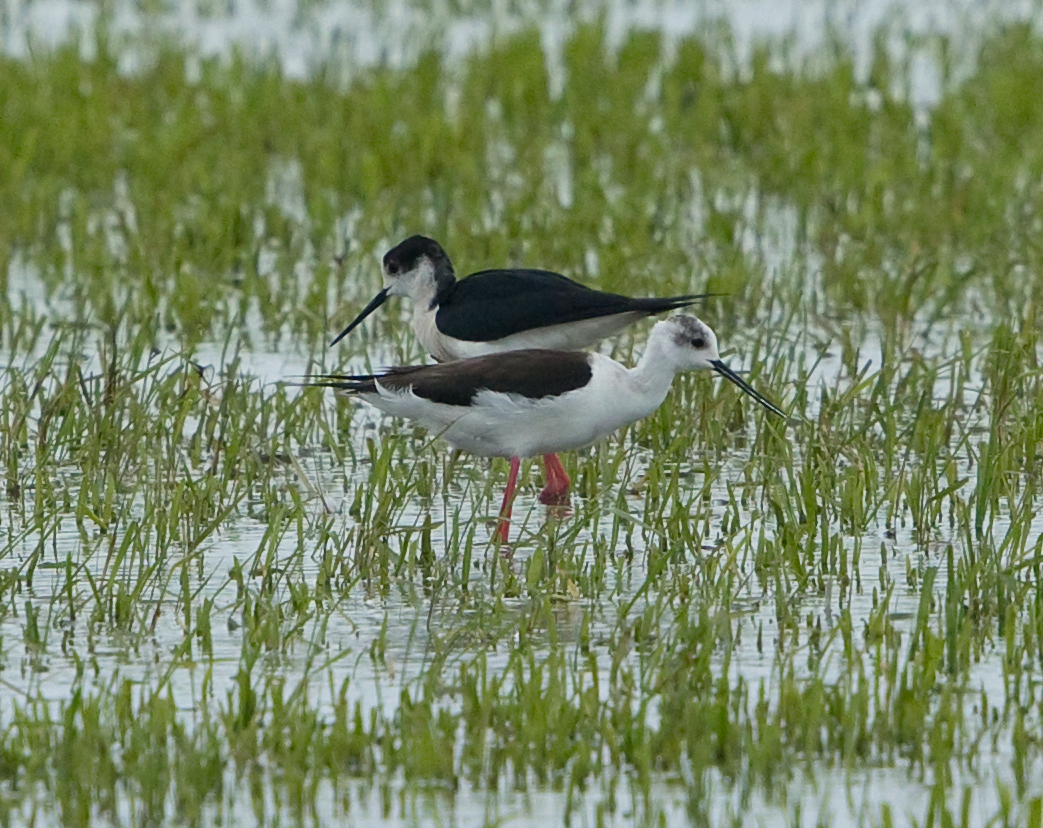
Black-winged Stilts, Bowers Marsh, Essex (Photo: Nick Brown)

Pectoral Sandpiper, Longtown, Cumbria (Photo: Roger Ridley)
Now that we are nearing the dregs of the annual White-billed Diver glut, three birds on 18th was a reasonable showing, with singles off Barra and North Uist in the Outer Hebrides and North Ronaldsay in Orkney. Back down on the Isles of Scilly, the male Snowy Owl stood grandly on Bryher till 18th but has not been reported since. Leighton Moss, Lancs, held onto its voiceful male Spotted Crake till at least 21st.
Snowy Owl, Tresco, Isles of Scilly (Video: Ashley Fisher)
Pembrokeshire built on its enviable track record of stunning spring Black-headed Buntings when Skomer turned up a male on 24th. Still present on 24th and a challenge to locate at times, but drawing the crowds nonetheless, was the first-summer Great Spotted Cuckoo at Portland Bill, Dorset, finding a fresh significance in contributing to the simultaneous presence of three cuckoo species in Britain. Kent produced two Red-rumped Swallows, at Stodmarsh and Folkestone, on 18th and 23rd respectively, and the Isles of Scilly were graced by one loyal bird till 22nd. European Bee-eater sightings came from Lowestoft, Suffolk, and Gramborough Hill, Norfolk, on 22nd and two were at Sandwich Bay, Kent, on 24th, but one that spent a few minutes feeding over Wimbledon Common, London, was much more significant. Hoopoes this week included two in Devon and singles in Cambridgeshire, Northumberland, Suffolk and Co Wicklow, while the two reported European Serins comprised the long-stayer at Selsey Bill, West Sussex, and another at Felixstowe, Suffolk, both on 19th.

Great Spotted Cuckoo, Portland, Dorset (Photo: Graham Stacey)

Red-rumped Swallow, Folkestone, Kent (Photo: Steve Tomlinson)

Hoopoe, Harthope Valley, Northumberland (Photo: Mark Bowen)
A new Ortolan Bunting, a female, on 21st cemented Fair Isle's excellent run of drift migrants and overshoots, as did a Red-throated Pipit the next day, when the bunting remained. The male Woodchat Shrike stayed faithful to 24th and the island boasted daily sightings of Bluethroat and Red-backed Shrike, with daily maxima of six and three respectively. Other Bluethroats consisted of two stayers on the Isle of May, Fife, on 19th and a female on North Ronaldsay on 20th, where a Red-breasted Flycatcher was ringed on 24th, while the only Red-backed Shrikes away from Fair Isle were a female trapped and ringed on Skokholm, Pembrokeshire, on 23rd and a male on Muckle Skerry, Orkney, on 18–20th. Fair Isle's haul also included one of the week's two Grey-headed Wagtails on 19th, the other individual being at Loch of Strathbeg, Aberdeenshire, on 18th. Another Ortolan was stumbled upon on St Agnes, Scilly, on the evening of 24th. The most significant and co-operative (by the species' standards) Golden Oriole visited the Lothian birding hot-spot of Musselburgh Lagoons on 22–23rd, occasionally showing in a wooded strip, while others were typically transitory at Frampton Marsh, Lincs, on 20th and Whitburn, Co Durham, on 23rd.
The Savi's Warbler at Minsmere, Suffolk, persisted in announcing its presence at Island Mere to 24th, and new reelers were at Five Mile Point, Co Wicklow, on 19–24th and at Blacktoft Sands on 23–24th, but one prancing around in the open in the garden of the Sumburgh Hotel, Shetland, was somewhat more gripping. At Paxton Pits, Cambs, the Great Reed Warbler also enthusiastically staked its claim on its chosen patch of reedbed to 24th and the Iberian Chiffchaffs at Barnes, London, and on Tresco, Scilly, declared themselves to at least 22nd and 23rd. An Icterine Warbler toured Fair Isle on 18–22nd and another was at Tresta, Shetland, on 24th; a Melodious Warbler was on St Agnes, Scilly, on 24th and the first confirmed Marsh Warbler report of the year came from South Norwood Country Park, London, on 22nd. Some might say Foula went a tad overboard at the weekend, producing males of both Eastern and Western Subalpine Warblers.
A Gull-billed Tern called in at Praa Sands, Cornwall, on the morning of 18th before continuing on its way, apparently bound for South Wales as what we can only assume was the same adult was identified on the mudflats of Loughor, Glamorgan, that evening. It put on a good show for visiting birders until 21st; Dungeness, Kent, was visited by what may have been the same individual the following afternoon. Other rare tern reports involved the two Whiskered Terns at Saltholme, Cleveland, to 22nd, when the individual at Attenborough NR, Notts, resurfaced for a short period, and a White-winged Black Tern at Grafham Water, Cambs, on 18th. North Uist enjoyed a light trickle of Long-tailed Skuas this week, topped by nine past Aird an Runair on 18th; elsewhere, a lone bird tracked through Saltcoats, Ayrshire, on 21st.
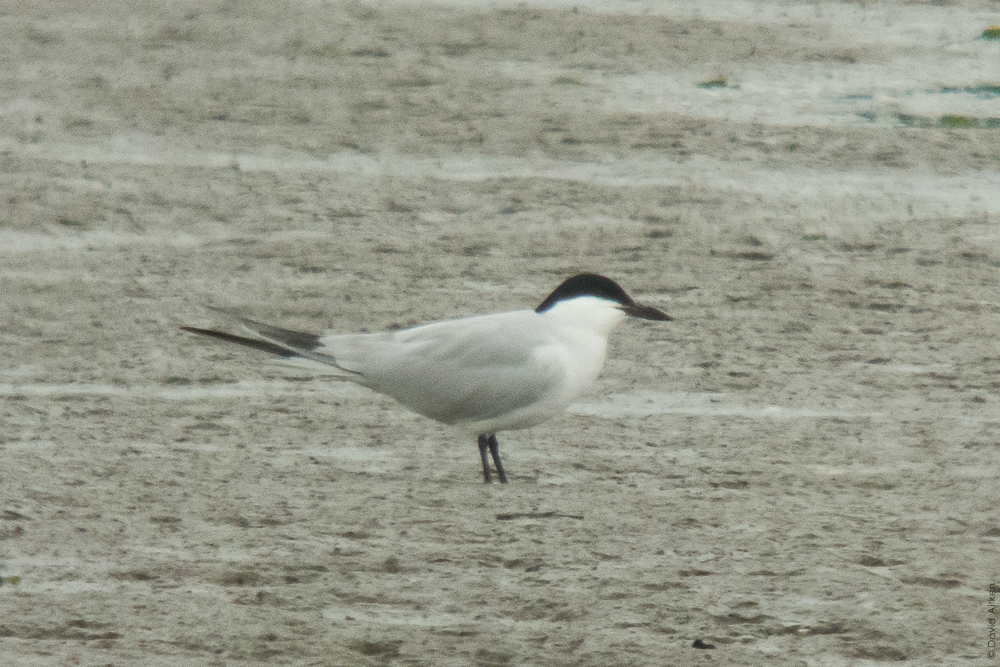
Gull-billed Tern, Loughor, Glamorgan (Photo: David Aitken)
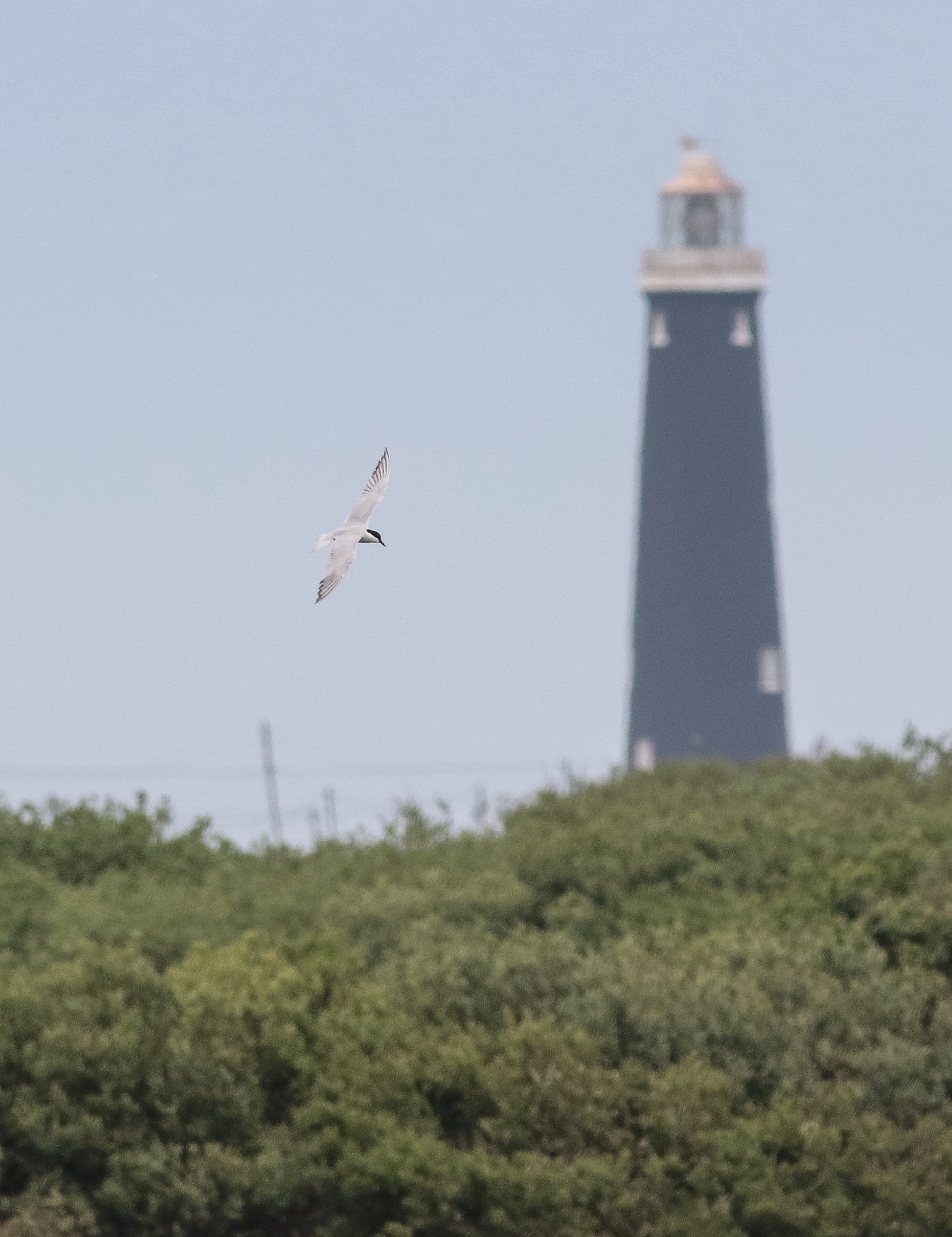
Gull-billed Tern, Dungeness, Kent (Photo: Jason Ward)

Whiskered Tern, Saltholme, Cleveland (Photo: Ian Forrest)
The female Red-footed Falcon in Essex hawked around Vange Marsh and Bowers Marsh to 24th and new birds, also females, turned up at the Cotswold Water Park, Wilts, on 18–24th and Sutton Common, Suffolk, on 23–24th. Fly-over Black Kite reports emerged from Saltholme on 19th, Rainham Marshes, London, on 20th and from Kessingland/Benacre and Thorpeness, all Suffolk, on 22nd. A handful of migrant Honey Buzzards and Montagu's Harriers in the south and east provided additional dividends for raptor-watchers.
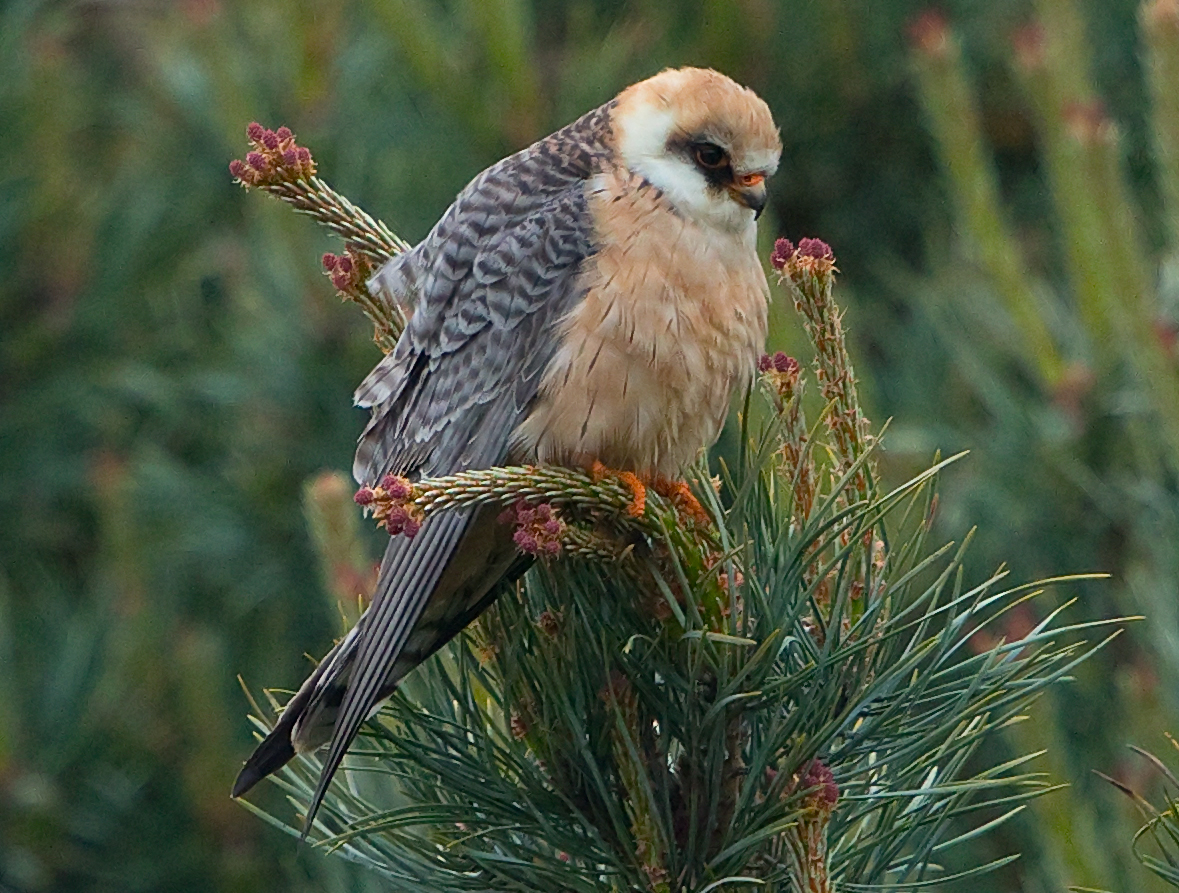
Red-footed Falcon, Sutton Common, Suffolk (Photo: Nick Brown)
A Night Heron at Dromantine Conference Centre made for a cracking Co Down record on 18th but did not hang around to celebrate, and another, an adult, was photographed at Carr Mill Dam, Lancs, on 22nd. The Purple Heron came out from hiding at Grove Ferry in Kent on 18th, and King's Fleet in Suffolk produced one for the second year running on 23rd. Apart from ongoing reports of the presumed escapees in Norfolk and Suffolk, two White Storks over Opinan, Highland, on 23rd and a single near Westonzoyland, Somerset, on 20th were the week's only sightings. In Co Wexford, the Cattle Egret seemed content at Tacumshin to 24th and another was seen at Sizewell, Suffolk, on 18th, preceding another sighting in the county, at Pipps Ford, the next day. A total of at least 21 Glossy Ibises included a group of five at Cahore, Co Wexford, on 22nd.
A first-summer Bonaparte's Gull on Castle Island, Northumberland, made for a superb county record late on 24th. It was an understandably quiet week for wildfowl, but three drake King Eiders were distributed between Moray and Nairn, Co Sligo and Highland while comfortable drake Surf Scoters were unshifting off Filey, North Yorks, to 19th and Unst, Shetland, to 24th.
Western Palearctic news
The week started with the reappearance of the long-staying Long-legged Buzzard at Maasvlakte, Zuid-Holland, Netherlands, on 18th, when the Stilt Sandpiper was still at Overbiel, Gelderland. The sandpiper had relocated to Terschelling, Friesland, the next morning but this was the last it was seen before it seemingly reoriented towards Britain. In Portugal, a Steppe Eagle over Mértola, Beja, was an impressive reward for a session of raptor-watching. Also on 19th, a displaying Wilson's Snipe was identified at Búrfellshrau, Iceland, potentially making for the second national record. The adult Black-browed Albatross returned to Heligoland, Germany, on 20th, when a White-throated Needletail flew over Rääkkylä in Finland and a Rufous-tailed Rock Thrush was found north-east of Zelhem, Gelderland, Netherlands (staying to 22nd). Finland's Oriental Cuckoo came back for another year at Sotkamo on 21st and a Bar-tailed Lark was found on the same date at Gruissan, Aude, France, staying till the next day.

Steppe Eagle, Portugal (Photo: Helder Cardoso)

Bar-tailed Desert Lark, France (Photo: Fred Veyrunes)
A Blue-cheeked Bee-eater at St Andrä am Zicksee, Seewinkel, on 22nd will give Austria its first national record of the species if accepted, and a Sardinian Warbler at Vistula Spit, Poland, the same day would be the nation's third. Also on 22nd, a Taiga Flycatcher was trapped and ringed at the bird observatory at Blåvand, Denmark. THe following day saw confirmation of the continued presence of the female Steller's Eider on the Faroe Islands, as well as a Slender-billed Gull at Przeczycki Reservoir, Poland, and a Eurasian Griffon Vulture at Texel, Noord-Holland, Netherlands.

